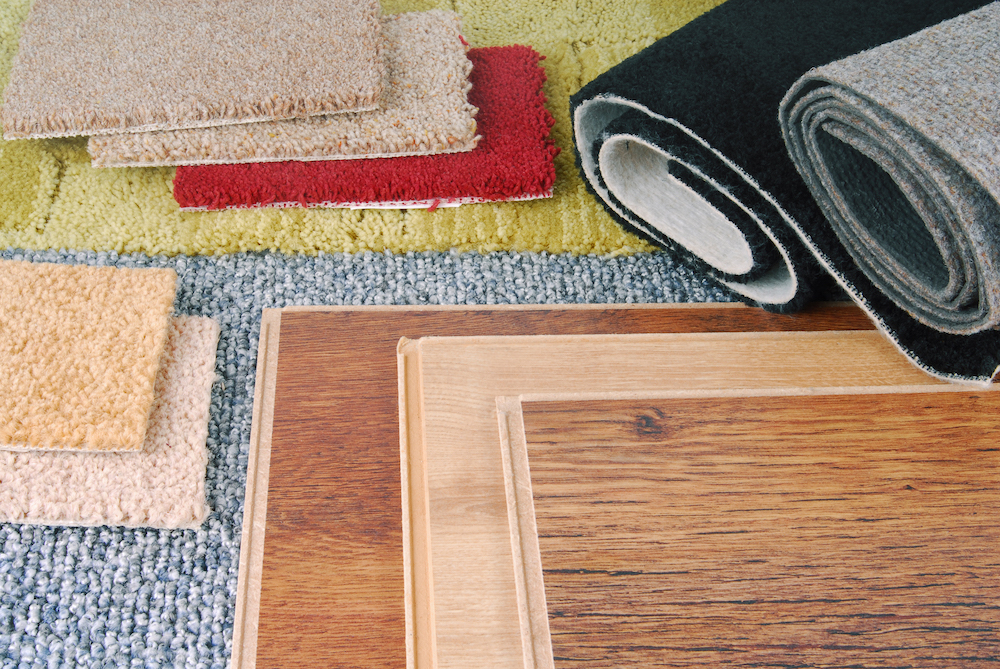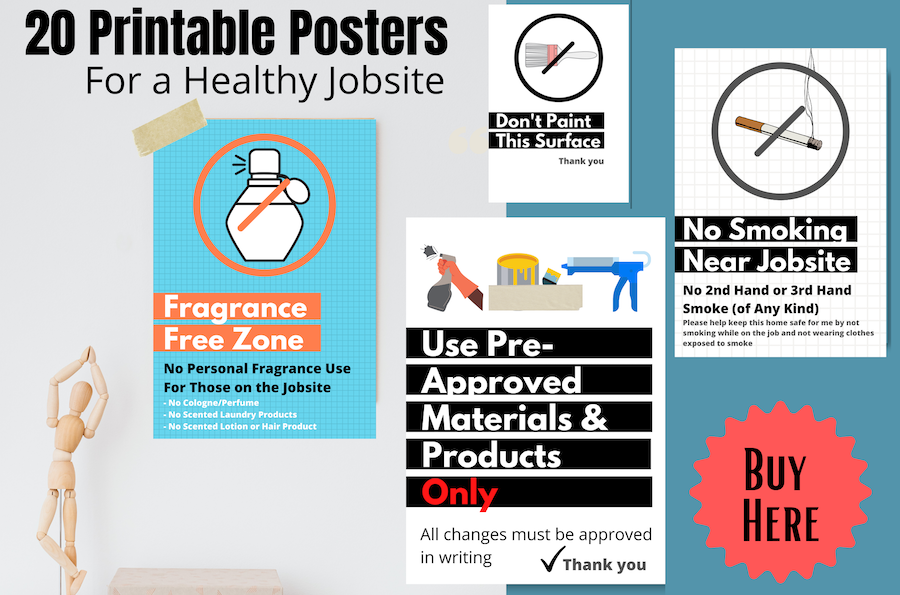This post is about how to self-test materials for tolerability when you have chemical sensitivities.
1. Sniff Test
The most obvious way to test for whether you are sensitive to something is by smelling it. This is probably how you came to find out you were sensitive in the first place. You are looking for odors that seem offensive or cause symptoms.
The plus side is that people with MCS often have a very good sense of smell, being able to spot a toxin from a considerable distance, and this can help you avoid offending particles.
The drawback is that not all toxins have a scent, and not all scents are toxic. This method is obviously skewed towards those things with more of a smell, i.e. essential oils may register as worse than flame retardants because they are more noticeable, but they are not necessarily more toxic.
Though what I have learned from a few years of consulting is there is no clear association with how toxic something is on paper and the reaction a person has.
People are sensitized to different substances and react strongly to certain types of chemicals over others.
To concentrate the chemical put the materials in a glass jar and close it up for at least a day or two before sniffing it.

2. Sleep-Next-To-It Test
This test is recommended by experts in MCS. You can put something you are testing next to your bed at night and see how you sleep and how it affects you in general.
This is probably the most widely used test for MCS sufferers. I find this test difficult because the item you are testing is likely quite small and it can be hard to tell if a large quantity would affect you. I have the same trouble with sniff testing. A large quantity of something can be totally different, or the same quantity in a smaller space.
Since the effects of toxins are also cumulative, this is a fairly big drawback. I’m not sure how much sleeping pills affect this test.
Another challenge with this test is you need a fairly “clean” toxic-free environment in which you are sleeping and it can be difficult to keep other factors stable.
Remember that changes in the weather, stress, emotions, medications, foods, chemicals sprayed outside or other exposures could affect your sleep or overall health.
3. The Erik Johnson Test
Erik Johnson’s test for toxins involves first decontaminating and getting out into a very clean tent or trailer, somewhere where the air is really good and where you have not brought any of your former belongings.
You can then lie outside, placing an item for testing on a tarp and see how you feel. Reactions can be delayed for up to four hours. Everyone has different indicators. For Erik, the best indicators are anxiety, depression, and insomnia.
Remember that the effects of toxins are cumulative – the last item in a series of testing might not be the only offender. After you have tested it outside you can bring things into your dwelling one item at a time to test them.
If you are testing a house/new location you will have to sleep there for a few days to find out if it is affecting you.
4. Naturopathic Test
There are various forms of muscle testing done by naturopaths and osteopaths that are quite good. Here is a how-to video. If you doubt the rationale behind it I would say suspend your disbelief for a while and give it a try. Use items you know to be tolerable as a base. If you are very in tune with your intuition and your energy and are very aware of how items, people, places, and sounds affect your energy, this could be a good method for you.
I like to close my eyes during this test and try to avoid having what your brain knows about the object affect your body’s intuition.
I don’t think it’s fool-proof by any means and I tend not to use this test when I’m unmasked.
…And Go by What you Know
It is good to try all of these methods as none of them are a definitive way of testing every substance. I am also a big advocate for learning about what toxins are in everyday items and materials so we can avoid them.
You need the knowledge to know which factors to isolate and test for, and you need the physical testing to find out which of those is actually a problem for your body. You might also find things you are physically sensitive to that you didn’t intellectually know were toxic.
But I think if you know something contains a toxin and you can avoid a toxin in your food, personal care products, furniture, clothing, building materials, air, then I would.

Anita
At Floor and Decor we purchased stranded bamboo flooring from Eco Forest Origins. It has a moderate smell. I’ve not been able to locate online the manufacturer to learn how it’s made. It is finished with Aluminum Oxide. If I understand you correctly, it shouldn’t be causing the odor.
The instruction sheet in the box included a caution about formaldehyde. I’m thinking this must not be a good sign. We were planning on laying the floor this week until we smelled the odor. They have no certifications noted on the box or in the instructions. We need a healthy floor, for health reasons.
Is there a way to test for formaldehyde content? Or any other concerns?
Thank you for your help.
Corinne
Sold strand bamboo has very low offgassing, engineered bamboo a lot more if it has HDF or MDF. The post on engineered wood has some photos and breaks down construction types and their offgassing. You can also air out the floor first and test for formaldehyde.
Sarah
Corrine. Do you, or any who visits this site, know of a reliable indoor air quality monitor (preferably one that allows for data logging)? The ones on the market for non-professionals seem junky, but the ones for professionals seem to cost thousands of dollars. Any knowledge and/or experience with this would be most appreciated.
Anaphylaxing
Great info thanks!
I'm still so protective of my bedroom that I haven't tried the overnight test. I'm interested to watch the naturopathic video.
Right now I mostly sniff, or put it in a relatively closed room for awhile then walk in. But I often get impatient and sniff too many things at once, then react and am left no further ahead. Gosh, it takes diligence as you know. But hooray for survivors who come up with these coping mechanisms.
I agree knowledge is power. There shouldn't be as much stigma associated with all of this. I get so caught up in the emotions of it all when it can really be broken down into practical steps a lot of the time. Keep blogging, it's awesome!
Anaphylaxing
Oh and one weird thing, for food for me the sniffing isn't totally reliable. Eg I react to organic roast beef cooking smell but can eat it no problem….?! Whereas with products etc if I react it usually means I can't use them because the majority of my exposure is inhaled….So tough to figure it all out. But my sniff reaction to spices and garlic is full blown anaphylaxis, so I can't even try eating it if i want to :S
Corinne
Yeah that is kind of what I was doing before I started searching for a better method. I have concluded that I am not in a clean enough environment now to do the first three, but I will have my trailer in July and I think it will be better!
Yes you are right, I didn't address food allergies or sensitivities….I think that's a whole other topic…
Anaphylaxing
That's too bad about where you are now. I'm in a love/hate with the place I'm in. Not sure if I'll ever tolerate anywhere else as I have yet to be able to, but know there are issues with it that could be better. So thankful I'm not homeless though…yet. You know what I mean. I SO hope your trailer works. I have yet to commit to one, but have contacted Livin lite.